Magome’s main street is lined with wood and plaster Edo-style buildings, most of which date from the 20th century as the originals fell into disrepair or were burnt down in the frequent fires that affected both towns. A wooden watch tower guards the entrance to Magome and there is a reproduction of a Tokugawa shogunate notice board (kosatsuba), which lays down the law for approaching visitors. Among the rules and regulations posted on kosatsuba by the Tokugawa authorities were prohibitions against Christianity and rewards for turning in practicing Christians. I’m glad that is no longer the case. The death penalty was enforced for cutting down any of the area’s cypress (hinoki) trees which were used for building the regime’s castles and are still used for rebuilding the Ise shrine every 20 years. The slog up the first slope is quite taxing, but hordes of tourists make the effort and are rewarded with views over the valleys and township.
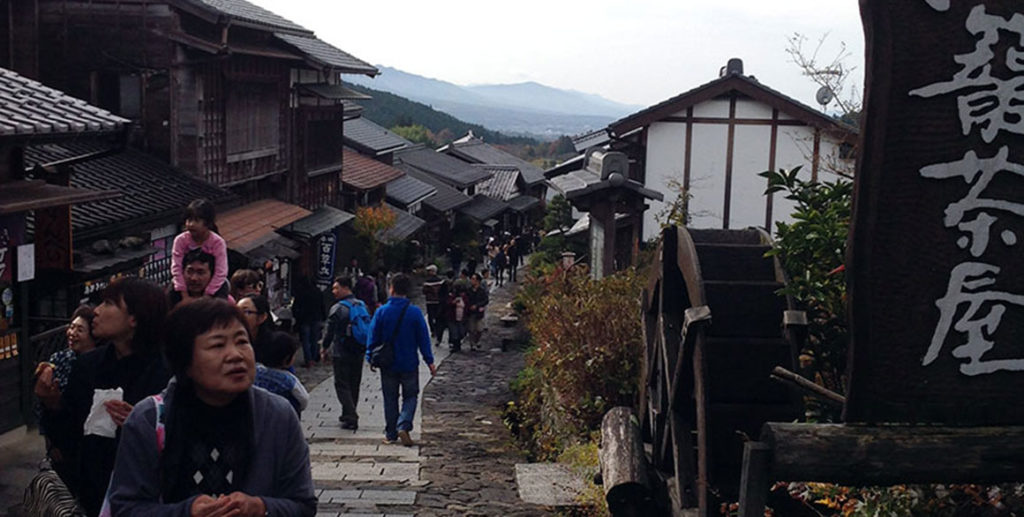
Most turn back at this stage, but we continued on towards the historic town of Tsumago along the old Nakasendo trail, which linked Kyoto to Tokyo during Japan’s feudal period. It is about 7.8 km from Magome to Tsumago and about 3 hours of leisurely hiking. The trail passes through forest and farmland as well as on the road connecting Magome to Tsumago.
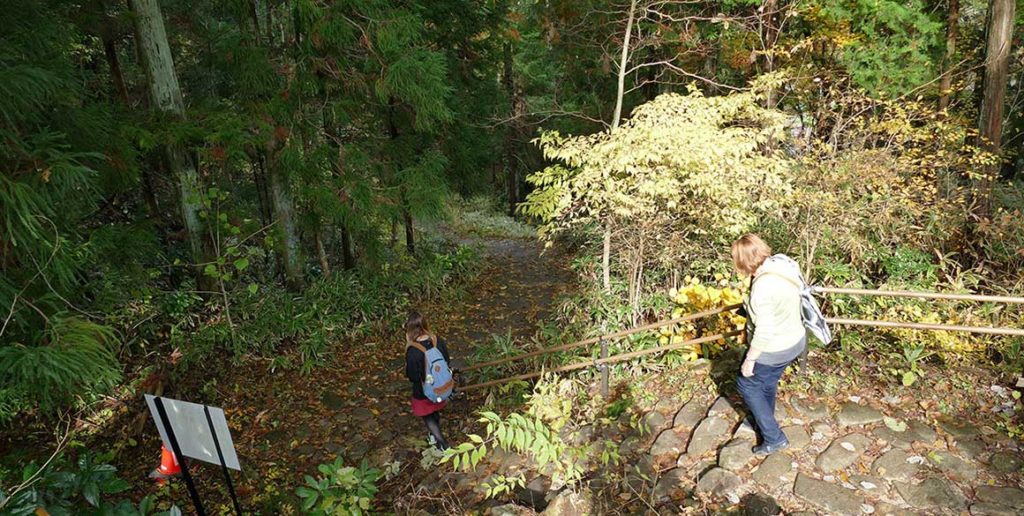
We stopped at a 250 year old tea house along the way and had a nice chat with the old gentleman who was there to offer us sour plums and green tea. He also gave Michelle a fertility token so that she would produce many children. We all had a good laugh at that.
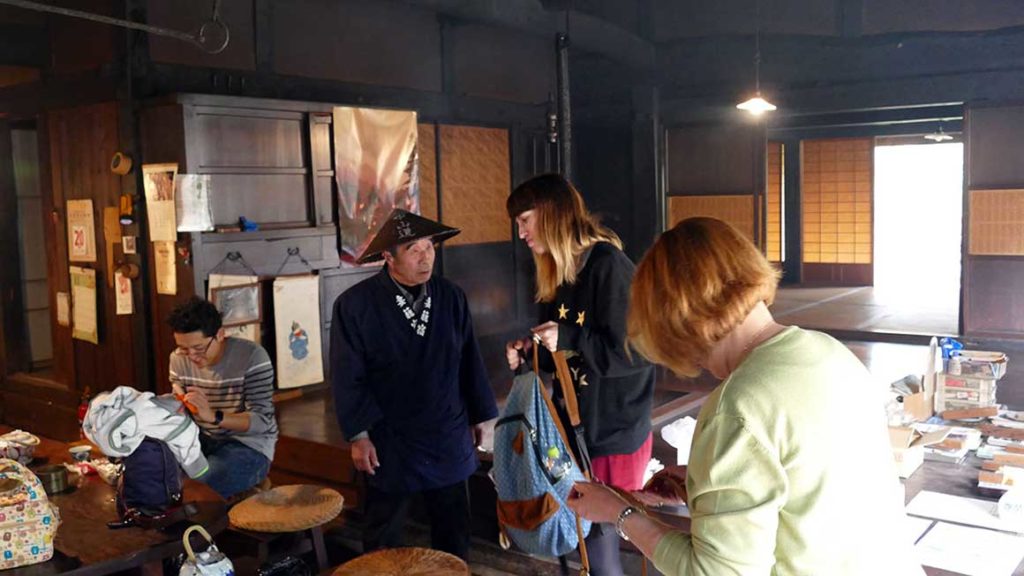
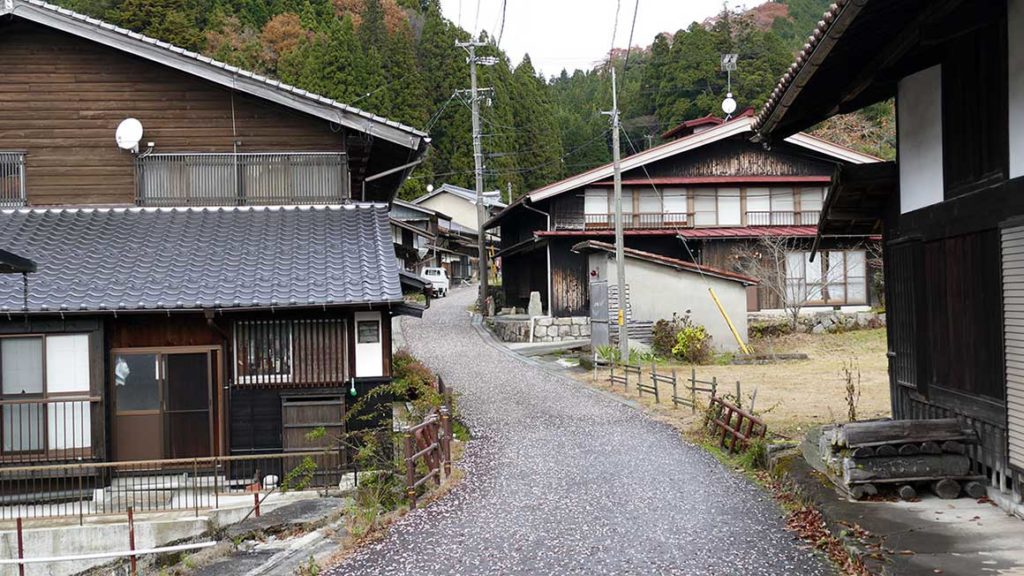
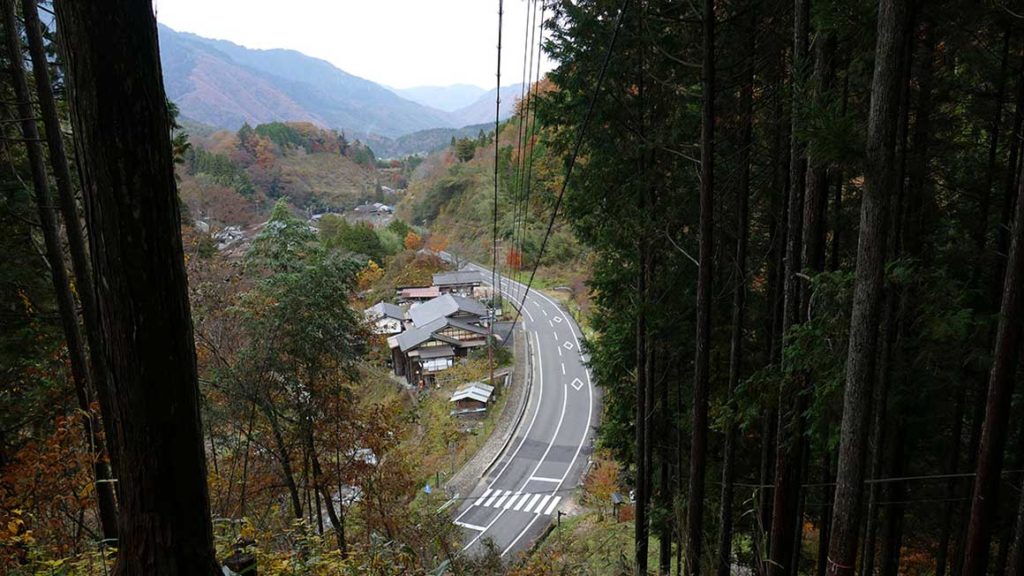
We arrived at the Hanaya Ryokan, but were a little early for check in, so walked into town for some sight seeing and a cup of coffee. Tsumago feels the more authentic of the two post towns as it suffered less from fire and began to be protected by the Japanese government in the mid-1970’s after restoration efforts by the town’s citizens in the 1960s, becoming a model for later preservation schemes in other areas of Japan.
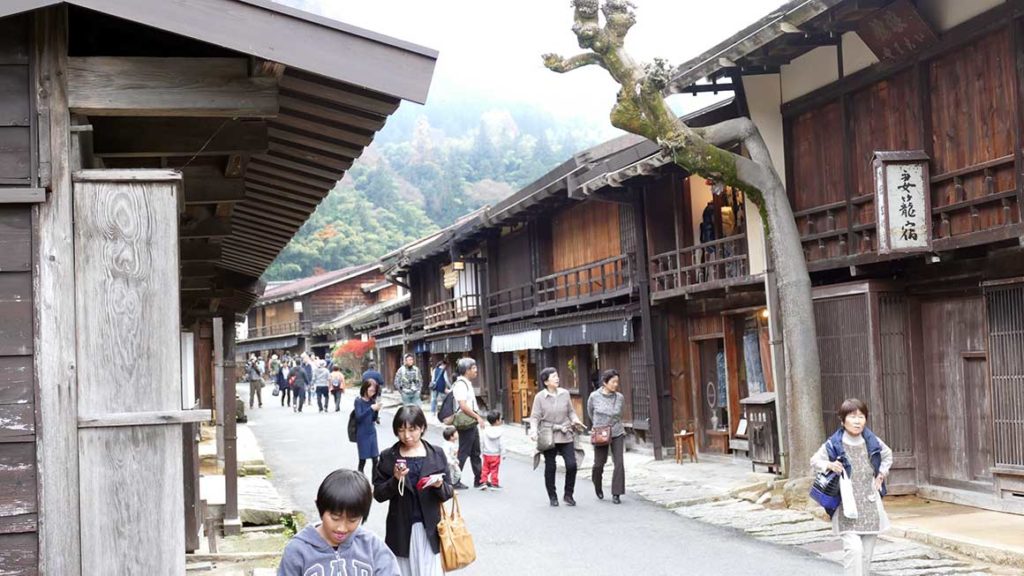
The delightful main street, which is closed to traffic, contains a variety of wooden and plaster Edo-style inns, houses, temples and shrines, with the surrounding, forested mountains as a spectacular back-drop. We caught the bus back up the hill to the inn and freshened up for a wonderful dinner. We got changed into traditional clothing and survived the unfamiliar seating on the floor. Our old western bones and joints are not accustomed to eastern customs, but we managed the chopsticks ok. Breakfast in the morning was just as nice and the food presentation is like artwork. If visiting Japan, it is a must to immerse yourself in the culture, at least part of the time. It was over too soon and we packed bags to catch the bus to the station and then on to the next stop, Nara.
